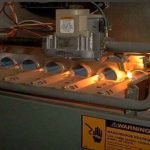In the intricate dance of your HVAC system, there’s a silent hero working tirelessly to keep you warm – the heating element. As we explore the marvels of these unsung heroes, we’ll dive into their importance, functions, and how they play a pivotal role in creating the cozy atmosphere we all love. So, let’s embark on a journey to understand why heating elements are indeed the heart of your HVAC system.
Unveiling the Essence of Heating Elements
The heating element, often overlooked, is the powerhouse behind your HVAC system’s heating function. Imagine it as the beating heart, pumping warmth through the veins of your home. This small but mighty component converts electrical energy into heat, ensuring your space remains comfortably warm, even on the chilliest days.
How Heating Elements Work
Ever wondered about the magic behind the warmth? Heating elements operate on a simple principle. When an electric current flows through the element, it encounters resistance, generating heat in the process. This generated heat is then circulated through the air, providing the toasty embrace we crave during colder seasons.
Exploring Different Types of Heating Elements
Not all heating elements are created equal. Let’s take a closer look at the main types and understand their unique features.
1. Resistance Heating Elements
These are the workhorses of the heating world, relying on the resistance of materials like nickel-chromium alloys to generate heat. They are durable, efficient, and commonly found in many household appliances.
2. Electric Furnace Heating Elements
Found in electric furnaces, these elements are responsible for producing warm air that is then distributed throughout your home. They are highly effective and offer precise temperature control.
3. Heat Pump Heating Coils
In heat pump systems, heating coils play a crucial role. These coils extract heat from the outdoor air and transfer it inside, providing an energy-efficient solution for maintaining a comfortable indoor temperature.
Maintaining the Heartbeat: Regular Maintenance Tips
Now that we’ve acknowledged the significance of heating elements, it’s vital to ensure their well-being through regular maintenance.
4. Keep It Clean
Dust and debris can accumulate on heating elements, affecting their efficiency. Regularly clean them to ensure optimal performance and longevity.
5. Check for Wear and Tear
Inspect your heating elements for any signs of wear and tear. Timely identification and replacement of damaged elements can prevent more extensive issues.
The Cost of a Failing Heart: Signs of Heating Element Issues
Just like any vital organ, heating elements can exhibit warning signs when something isn’t right. Here are some red flags to watch out for.
6. Uneven Heating
If certain areas of your home are warmer than others, it could indicate a malfunctioning heating element.
7. Strange Odors
Unpleasant odors during heating could signify a burnt-out heating element. Addressing this promptly is crucial to prevent further damage.
8. Increased Energy Bills
A sudden spike in energy bills might indicate an inefficient heating element, causing your system to work harder to maintain the desired temperature.
Conclusion: The Warm Embrace of Heating Elements
In conclusion, heating elements are the unsung heroes of our HVAC systems, providing the warmth we often take for granted. Regular maintenance and prompt attention to issues ensure the heart of your HVAC system beats strong, keeping you cozy all year round.
FAQs: Answers to Your Burning Questions
Q1: Are heating elements expensive to replace?
A1: The cost varies but investing in quality replacements ensures long-term efficiency.
Q2: How often should I clean my heating elements?
A2: Cleaning every few months is ideal, but it depends on usage and environmental factors.
Q3: Can I replace a heating element on my own?
A3: While some DIY enthusiasts can, it’s recommended to consult a professional for safety.
Q4: What’s the lifespan of a typical heating element?
A4: With proper maintenance, heating elements can last 8-12 years on average.
Q5: Does a malfunctioning heating element always need replacement?
A5: Not always. Sometimes, repairs can address minor issues, but professional evaluation is key.
Engage with the warmth of your HVAC system’s heart – the heating element – and ensure its well-being for a cozy home.





